As for the most powerful woman in ancient China, Wu Zetian must be mentioned. From the time she entered the palace to the time she abdicated, Wu Zetian's life spanned nearly seven decades from the early Tang Dynasty to the peak of the Tang Dynasty, nearly a quarter of the reign of the Tang Dynasty.
With the overall national power, economy, customs, and even climate change of various factors, this period of court makeup, whether the overall aesthetic, or makeup, hair, jewelry, and even clothing, have undergone huge changes. As a woman who eventually rose to the top of imperial politics, Wu Zetian had the powerful energy for changing the makeup fashion of the day.
01 From the simple charm of the old dynasty
Wu Zetian was born in the seventh year of Wu De (624), and entered the palace at the age of fourteen in the eleventh year of Zhenguan (637). After twelve years as a concubine, she followed the other concubines without children into the Temple of Sensationalism as a nun.
The style of Tang women's clothing in the Zhenguan period was similar to that of the late Northern dynasty and Sui, advocating a slender figure and relatively conservative and simple makeup, which had not yet developed an exaggerated and intense style.
At this time, most of the concubines in the palace were lightly made up, slightly powdered, simple and clean, with high buns, wearing large-sleeved Ru Shan and long skirts with very high waist; and as women with more general status, they might wear more narrow-sleeved Shan and inter-skirts, and their hairstyles were dominated by ring buns.

Emperor Taizong Receiving the Tibetan Envoy
In "Emperor Taizong Receiving the Tibetan Envoy", which reflected the story of Zhenguan's 15th year, the courtesans around Taizong give us an apt glimpse of the makeup of the palace at that time. The makeup is light, the eyebrows are short, no jewelry, the body is thin and capable.
At this time, most of the female clothing tops were cross necked or round necked narrow-sleeved Shan, and skirt waist position is very high, even bundled to the chest armpit, almost near the collar. When the palace maids and maidservants walked or worked outdoors, they would also gather the skirt in the waist or crotch to make it easier to act.
The common hairstyle still has a strong Sui dynasty style, sideburns are gathered to fit, and the top of the head is dominated by a low cascading coiled bun, or coiled into a single bun, or with a double bun.
At the same time, the new high bun style also began to appear, the palace noblewomen prefer to pull the hair gathered to the back of the head, in the bottom of the flip and up into a bun. Then this high bun soon became popular among the people.
In the fourth year of Zhenguan, Emperor Taizong of the Tang Dynasty drafted tens of thousands of people to build the Luoyang Palace, and a straightforward and courageous minister of Zhongmou County, Huangfu Decan, submitted a petition, firmly opposing the construction of the Luoyang Palace, arguing that it was a waste of money for the people and not much benefit. In particular, he said, "The high bun is popular among the people because of the undesirable role played by the concubines in the palace".
Taizong was furious and thought that Huangfu's accusation was totally slanderous, and he said, "Would he be satisfied if all the concubines in the Tang palace had no hair?" But later, with the advice of Wei Zheng, Taizong calmed down his anger and rewarded Huangfu Decan.
Although criticized, the high bun style has not been affected at all. This hairstyle continued until after the Tang Dynasty, and became one of the higher status of female hairstyles in the Tang Dynasty.
The high bun hairstyle were often seen in the mural and pottery figurines of this period, as the knife-shaped, also know as "Dao Ji (刀髻)" or "Dan Dao Ban Fan Ji (单刀半翻髻, half-turned bun)".
02 Gradually stepping into the openness
In the second year of Emperor Gaozong's reign (651), Wu Zetian entered the palace again, establishing herself step by step in the palace and ascending to the position of Empress.
At this time, the style of female image in the Tang Dynasty also quietly began to change, the revered body shape from slim and thin to more upright, the style gradually opened up, and the makeup also developed towards sophistication.
Compared to the extremely high waist of the skirt in the early Tang Dynasty, the skirt began to move slightly down to the chest, and the degree of breast exposure increased, but it was still tightly tied, with a wide hemline. The cuffs and edges of the bodice are sometimes decorated with a wide floral brocade border.
The types and forms of hair buns became more abundant, and in addition to the fuller and taller half-turned bun, various kinds of ring buns also became popular.
The court ladies had more exaggerated ring bun, the ring diameter was doubled and expanded to become the eye-catching left and right two big rings, which was also the common performance hairstyle of the dancers.
Jewelry in the base of the ring bun with hairpin fixed, or in the half-turned bun side insert hairpin one or two.
At this time, it was more and more common to see a gorgeous version of makeup with Mianye (面靥) painted on both sides of the lips, Huadian (花钿) painted on the eyebrows, and crescent-shaped Xiehong (斜红) painted on both sides of the cheeks, which became one of the most representative ways of makeup in the Tang Dynasty.
The mural of Wei Guifei of Zhaoling in 667 depicts a more complete makeup, whether it is the portrait of the musicians, maids, or the tomb owner Wei Guifei herself, most of them are painted with Xiehong, blush, and black Mianye on both sides of the lips, as well as the flower ornaments on the forehead, or fan-shaped halo, or flower and plant-shaped.
From the images, this period black Mianye is the competing fashion, even Wei Guifei herself, which is rare in other times.
03 Wu Zhou: Gorgeous blooming in full makeup
In the first year of the Tang Emperor Gaozong's reign (674), Gaozong became the Emperor, and all political affairs were handled by Wu Zetian. In the first year of Tianshou (690), Wu Zetian officially became the emperor and changed the name of the country to "Zhou" until she was forced to abdicate in the first year of Shen Long (705).
Empress Wu made various innovations and reforms to the political symbolism of clothing, several times rewarding senior officials and generals with gorgeous embroidered robes, and symbolizing civil and military officials with fierce birds and beasts.
At the same time, as the political status of women increased significantly, the style of daily women's clothing also changed greatly. This period can be regarded as the most relaxed and confident, plump and well-proportioned period of female image in Tang Dynasty, while the dressing style is also the most open and exposed, jewelry and decoration also gradually towards gorgeous. As an era when women were in power, this was a logical change.
The first and most striking thing is the confidence in showing off the figure. The extent to which women bared their full breasts increased dramatically, to a degree that is even today considered slightly exaggerated.
Dresses were often colored in rich, strong colors such as red and green. The upper class women's clothing became more and more extravagant, and the practice of using brocade materials at the edge of the clothes became more and more common, even the short sleeves and Beizi were made with magnificent brocade embroidery.
The hair style developed in the direction of fluffy, especially the two sideburns bulged into "Yun Ji (云髻, cloud temples)", no longer the state of the early Tang Dynasty. On the basis of the cloud temples, the half-turned bun remained popular as the common hairstyle for people with high status, and developed into wearable wig buns with gorgeous inlay. Such as a wig bun made of thin wood excavated in Astana, which was painted with various cloud-shaped or flower-shaped ornaments.
In addition, the double petal, together with the single petal spiral bun, became the most popular bun in the Wu Zhou Dynasty, and its form gradually changed from small to large, developing into a full and rounded large bun at the end of the Wu Zhou Dynasty, and also appearing as a substitute for the same-shaped wig buns, fixed by hairpin and lacing.
During the Wu Zhou period, women's makeup tended to be more colorful and gorgeous. Thick eyebrows, rouge blush expanded from under the eyebrows to the side of the face, the shape of the flower inlay on the forehead was not only simple fan-shaped, but also various flowers, curly grasses and clouds haloed with complex flower patterns, and both sides of the slanting red, in addition to a red halo, would also be painted into complex patterns.
The most representative example comes from a group of painted clothed figurines excavated from the tomb of Zhang Xiong and his wife in Tulufan in the first year of Yongchang (689), with different and exquisite patterns of painted faces.
After Empress Wu's abdication, women remained active at the pinnacle of power, including her daughter Princess Taiping and daughter-in-law Empress Wei, until the reign of Emperor Xuanzong. The gorgeous Wu Zhou style was also maintained until the early years of the Kaiyuan era, while the Tang women's fashion for plumpness as beauty, loose clothing, rich red makeup, is something that came after.
Reference content selected from "The Beauty of Chinese Makeup (中国妆容之美)"
More about the makeup of different dynasties in ancient China:

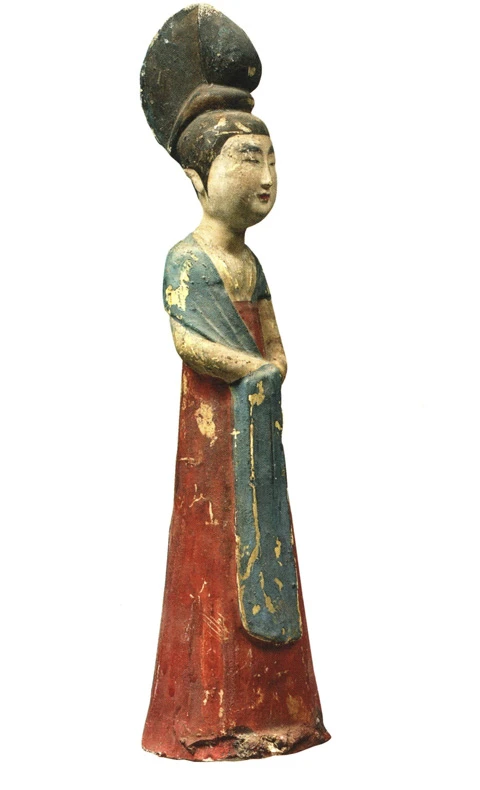

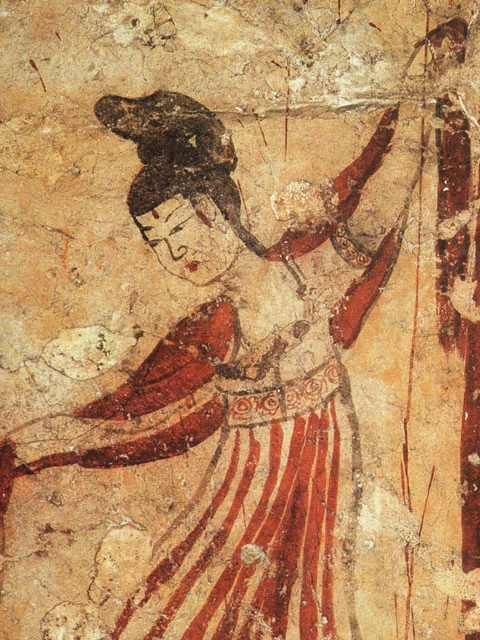
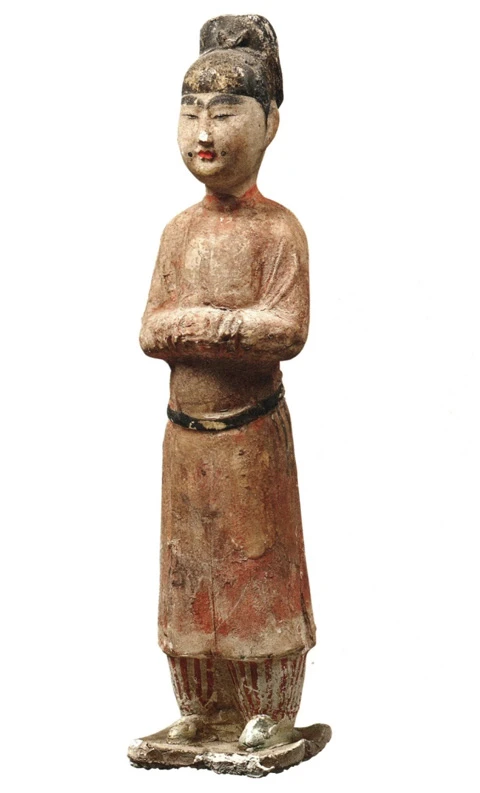
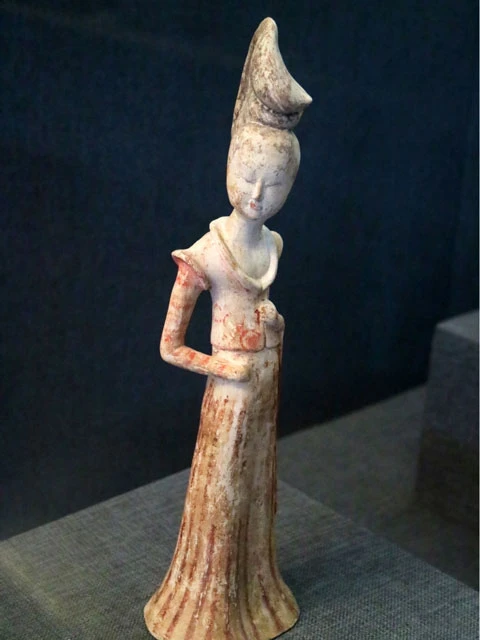
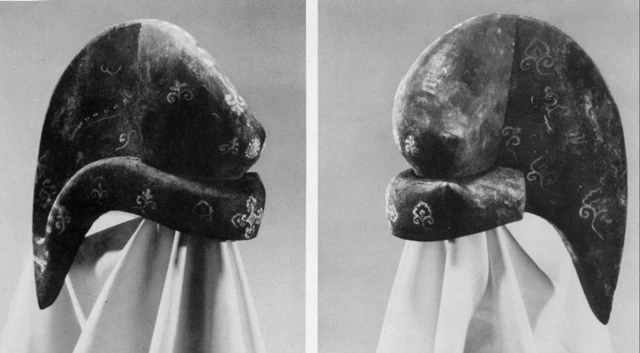
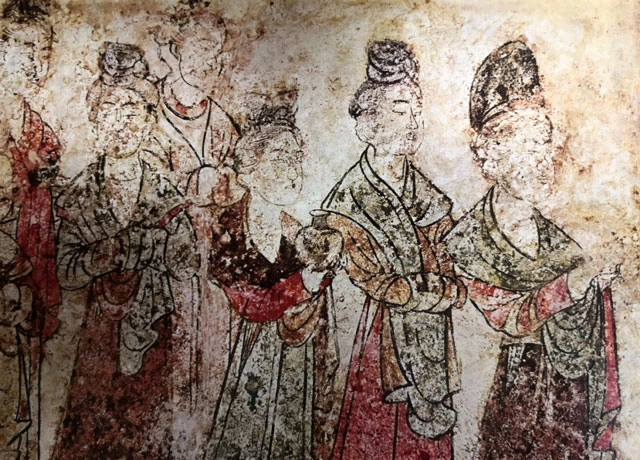
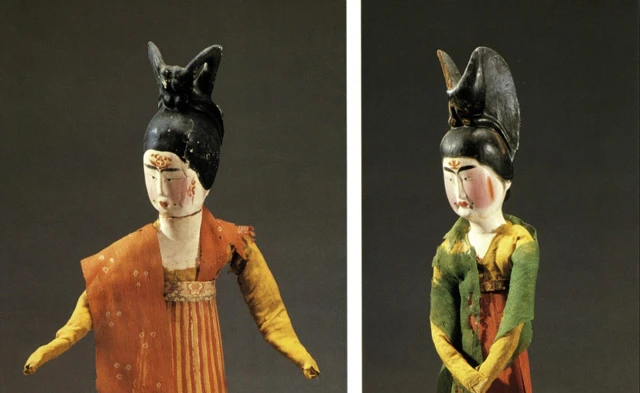
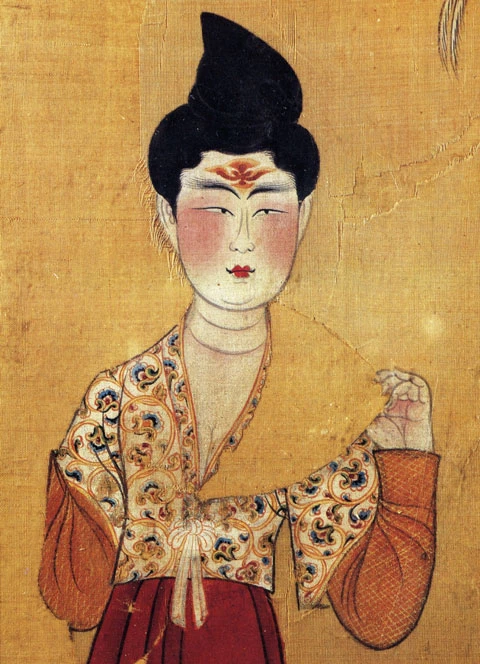
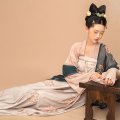
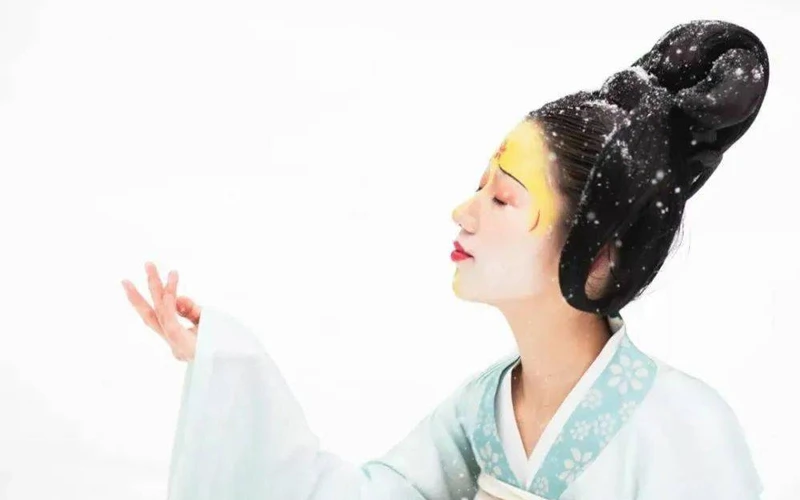

Nice to learn about!
Yea this is so cool!!
Ah, thanks for this!
🥰🥰🥰🥰